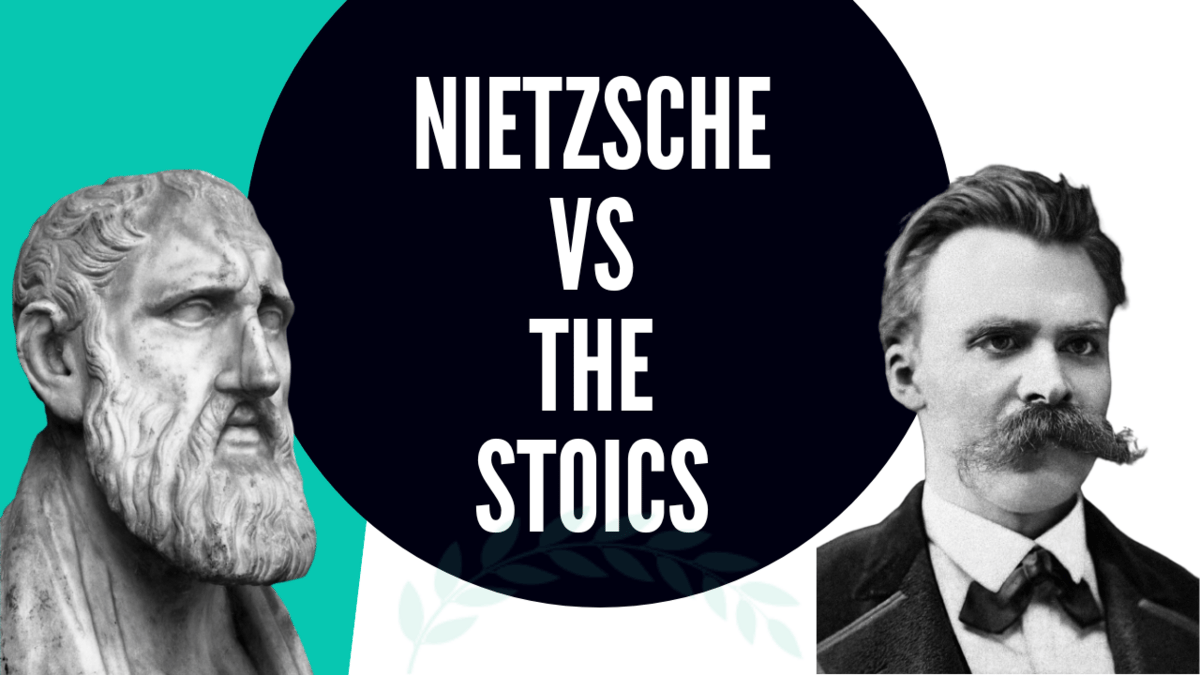II. Say Yes to Life
Nietzsche week, willing acceptance, and a fashion magazine on Stoicism
Welcome to The Stoa Letter, the newsletter on Stoic theory and practice.
Each week we share one meditation on Stoic theory, one action to do in order to become more Stoic, and links to the best resources we’ve found.
🏛️ Theory
Whatever happens, love fate. Amor fati.
There’s a well-known Taoist fable of a farmer:
One day the farmer’s horse ran away. Upon hearing the news, his neighbors came to visit. “We’re so sorry. Such bad luck,” they said.
“Maybe,” the farmer replied.
The next morning the horse returned. It brought three other wild horses. “Wow – that’s great,” the neighbors exclaimed.
“Maybe,” said the farmer.
The following day, the farmer’s son broke his leg while training a new horse. The farmers' neighbors returned, to offer their pity. They said, “We’re so sorry. Bad luck in the end.”
“Maybe,” answered the farmer.
The day after, military officials came to the village to recruit young men. Seeing that the farmer’s son's leg was broken, they didn’t draft him. The neighbors congratulated the farmer. “In the end, it is a happy story after all,” they said.
“Maybe.”
The farmer internalized the Stoic Seneca’s maxim that we should treat Fortune as if anything that is within her power will come to pass. He does not trust prosperity nor despair at bad luck.
But the German philosopher Friedrich Nietzsche would add one detail to this story: we should enthusiastically say yes to life.
The farmer accepts whatever happens. He lets things come, let them be, and lets them go. In the farmer’s fashion, maybe we can all learn to respond to life with a little more “maybe.”
But does he willingly accept it? It does not seem like the farmer loves fate. Perhaps, for me, it is this detail that has always left something to be desired from this story.
My formula for what is great in mankind is amor fati: not to wish for anything other than that which is; whether behind, ahead, or for all eternity. Not just to put up with the inevitable—much less to hide it from oneself, for all idealism is lying to oneself in the face of the necessary—but to love it.
Ecce Homo
The level after acceptance is enthusiastic acceptance.
The best people don't just tolerate the way things are, they embrace reality. They see what is true, good, and beautiful in it.
After the war, the neighbor’s sons were decorated with war medals. Upon seeing that the farmer’s son was bereft of military honors, his neighbors came to him once again: “We’re so sorry. Such bad luck.”
The farmer laughed. With a smile, he said, “Yes!”
🎯 Action
Train enthusiastic acceptance by holding your breath for a long period of time. As you experience discomfort, practice willing acceptance by imagining that you have willed the uncomfortable sensations into existence.
Use this technique on anything stressful that emerges today.
🔗 Links
🎧️ It’s Nietzsche week. Caleb Ontiveros and Michael Tremblay discussed Nietzsche and Stoicism at Stoa Conversations. Both Nietzsche and the Stoics believed that we are self sufficient and capable of accepting reality as it is.

The Greek Beard vs the German Mustache
But Nietzsche ultimately challenged the Stoics saying they had a “fossilized version of life.” Instead of valuing tranquility, he put the tortured artist on a pedestal. Following in Nietzsche’s footsteps, many celebrate suffering as necessary for achievement today. What’s up with that? Also on Stoa Conversations, investor and author David Jilk and Caleb Ontiveros discuss amor fati and how entrepreneurs can learn from Nietzsche. I highly recommend that conversation if you’re an entrepreneur or operator.
📖 I discovered the term “willing acceptance” from Steven C Hayes.
In his book, Get Out of Your Mind and Into Your Life, he introduced acceptance commitment therapy (as well as the breathing exercise above).
Here’s the key idea: whenever you notice a negative emotion, you can change how you think about it or willingly accept it. To do the first, reframe the thought, disputing it, and remind yourself that so much suffering is the result of false judgments. We suffer more in imagination than reality. To do the second, simply embracing the negative feeling and returning to what matters. Hayes offers a framework for doing just that. Both strategies are crucial to have at hand. Note too how they are two different sides of the the serenity prayer:
God, grant me the serenity to accept the things I cannot change, the courage to change the things I can, and the wisdom to know the difference.
Reinhold Niebuhr
📰 And now for something a little different, last week Natasha Bird, editor for the fashion magazine Elle, published a personal piece on Stoicism. She shared how it has and hasn’t worked for her:
And yet, just as stoicism has become the philosophy that everyone is talking about, I can’t help noticing more and more of its pitfalls. Composure in moments of emotional distress makes my decision-making sharp, but it doesn’t always make me relatable.
I think she accurately identifies problems many encounter on their Stoic path. It’s always useful to revisit Epictetus who saw similar issues with his students:
When you see anyone weeping for grief…take care not to be overcome by the apparent evil; but discriminate, and be ready to say, “What hurts this man is not this occurrence itself,- for another man might not be hurt by it, – but the view he chooses to take of it.” As far as conversation goes, however, do not disdain to accommodate yourself to him, and if need be, to lament with him. But take care that you do not lament internally also.
The Handbook, 16
The takeaway? Sometimes we should commiserate with others, even when they’re not being Stoic. That may even mean acting in an non-Stoic way, while maintaining inner composure. No one said this was easy.

